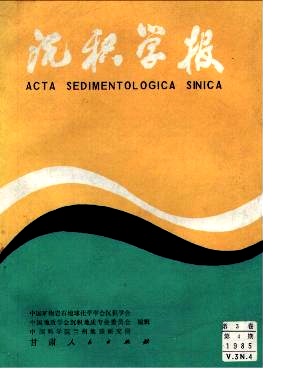THE RELATIONSHIP BETWEEN THE CEMENTATION AND DIAGENETIC ENVIRONMENT OF THE HOLOGENE BEACHROCK, HAINAN ISLAND
- Received Date: 1983-11-07
- Publish Date: 1985-12-10
Abstract: The samples of the Holocene beachrock in Hainan Island studied in this paper were taken in Shuiweiling Sanya Bay, Xizhou Island,Xiaodonghai, Dongmao Island, Ximao Island, Tianyahaijiao County, Yinggehai. Ledong County and Yuye, Wench-ang County. This paper mainly deals with the relationship between the cementation and diagenetic environment of beachrock. The cements of the Holocene beachrock in Hainan Island are mainly aragonite, high-Mg calcite and low-Mg calcite. The aragonite mainly appears fibrous to aci-cular,sometimes micrite: the high-calcite appears micrite and pelletoid:and the low-Mg calcite appears isoaxial granular. They make up of various cementation fabrics respectively, such as.(1)fibrous to acicular circumgranular fabric,(2)micrite cement fabric, (3)pelletoid fabric, (4)micrite packing fabric, (5)fibrous pendant fabric(a-ragonite),(6)isoaxial granular fabric, (7)fibrous (or bladed) pendant fabric(low-Mg calcite). (8)isoaxial granular meniscus fibric, and(9)isoaxial granular pendant fabric. All the fabrics are closely related to the diagenetic environment, they can be used as the symbols of marine environment ( both phreatic and vadose zones ) and fresh-water environment ( both phreatic and vadose zones). The recent beachrock which is still in the marine environment or is inf luencedmainly by marine environment is of the cementation fabrics(1)to(5).In the naturally vertical sections of beachrock the cementation fabrics have a zonation: the micrite and fib- rous-acicular circumgranular fabrics distributed in the lower part of the sections, and the fibrous-acicular pendant fabric ( aragonite ) distributed in the upper part of the sections. They represent marine phreatic ( the lower part of intertidal zone ) and marine vadose ( the upper part of intertidal zone)diagenetic environments respectively. Because the cementation fabrics (1) to (4) are similar to those of shallow sub-tidal zone ( both are in the marine phreatic environment ) , the cementaion fabric(5) -the fibrous pendant fabric(aragonite)is the characteristic symbol of recongnizing beachrocks. The Middle-Late Holocene beachrock which is now in the meteoric fresh-water environment is of cementation fabrics (6) to (9), among which the cenmentation fabrics (8) to (9) are only distributed in the freshwater vadose environment,and the cementation fabrics (6) to (7) are distributed both in fresh-water phreatic and vadose environment. The authors think that the cementation fabric (7)-fibrous ( or bladed ) pendant fabric ( low-Mg calcite is not the product which was precipitated in the fresh-water vadose environment, but is the residual fabric of aragonite neomor-phism under the influence of atmosphere fresh-water,and the primary aragonite was the fibrous pendant cement fabric precipitated in the marine vadose environment.The presence of the cement fabric in the Middle to Late Holocene beachrock indicates that it used to have the diagenetic history of marine vadose environment. The organism plays an important role in the formation of micrite cement. The features of the micrite cement and pelletoid cement under microscope dealt with in this paper provide some evidences for the organism origin of the micrite cement.
| Citation: | Wang Shuyi, Ye Desheng. THE RELATIONSHIP BETWEEN THE CEMENTATION AND DIAGENETIC ENVIRONMENT OF THE HOLOGENE BEACHROCK, HAINAN ISLAND[J]. Acta Sedimentologica Sinica, 1985, 3(4): 45-54. |






 DownLoad:
DownLoad: